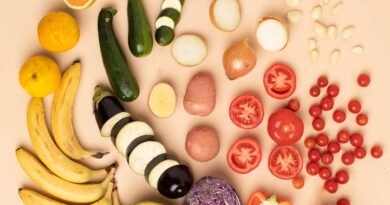10 Bad Mood Foods, Plus Healthy Swaps to Make

Some things seem specifically designed to put you in a bad mood, like parking tickets or 40-minute wait times when you call customer service. There is another rotten mood culprit out there: the bad mood foods you may be eating.
How poor nutrition contributes to bad moods
Think about how you feel after inhaling a bowl of pasta or another heavy dish. Are you super alert or feeling sluggish and ready for a nap afterward?
How about that “hangry” feeling, where no food or not enough food for too long can leave you irritable and snappish?
Food has a massive influence on our moods and how we feel, whether we’re talking mood-boosting foods or the reverse.
That’s because what we eat affects the neurotransmitters our brain produces. These are the brain chemicals that guide how we’re feeling.
Neurotransmitters like serotonin help us relax, while dopamine can help us feel more focused. The foods we eat provide the building blocks for these chemicals, as our brains extract the nutrients necessary from the foods we eat to create the neurotransmitters, which, in turn, regulate and enhance our moods.
If our brains aren’t given the fuel they need to provide the right balance of neurotransmitters, we can be prone to mood swings, seemingly endless bad days and more. While foods rich in omega-3 fatty acids — like wild-caught salmon and avocado — boost our moods, low-quality food actually negatively impact your brain.
For example, studies have linked ultra-processed foods like fast foods and baked goods to depression, greater aggression, anxiety and other mental illnesses.
Our blood sugar also affects our moods.
When foods are high in added sugars, the spike is followed by a crash when insulin starts to clear sugar from your blood. These sugar lows are often accompanied by headaches and irritability.
Bad mood foods to avoid (plus healthy swaps)
While you’re hopefully already skipping the drive-thru and turning your nose up at value meals, there are some bad mood foods that might surprise you.
If you’ve found yourself feeling down in the dumps and have any of these bad mood foods or drinks in your diet, it might be time to swap them for feel-good foods instead.
1. Agave nectar
In the height of the high-fructose corn syrup crisis (still bad for you, by the way), agave nectar burst onto the health food scene. It was sweet, produced from a natural plant and low on the glycemic index scale, making it the perfect substance for marketing to diabetics.
People began using agave nectar in the kitchen, from drizzling on pancakes to sweetening up desserts.
So is agave nectar good for you? Not exactly.
The highly processed procedure that agave goes through to make it to store shelves involves stripping away the naturally occurring agave juice of all nutritional value. It’s made largely from fructose, the most damaging form of sugar, which is metabolized by the liver and not the bloodstream.
In fact, agave nectar has the highest fructose content of any commercial sweetener you can buy, including high-fructose corn syrup.
When it comes to your mood, the high amount of fructose found in agave syrup increases your risk of metabolic syndrome, a collection of conditions including obesity, high blood pressure and insulin resistance, all of which can lead to a pretty bad mood.
Good mood food alternative: If you want to sweeten things up, raw honey is a terrific swap. Try Manuka honey for all of its health benefits.
Locally produced honey and organic 100-percent maple syrup are also great options.
2. Alcohol
Whether it’s winding down after a long workday with a glass of wine or ushering in the weekend at happy hour, alcohol sometimes plays a bigger role in our day-to-day lives than we realize. If you’ve been feeling down in the dumps, it might be time to evaluate how much and how often you’re drinking.
While moderate alcohol intake sometimes can be good for you, particularly red wine, imbibing too frequently can leave you feeling pretty down in the dumps, well past that morning after hangover.
While you’re sipping your drink, you might feel cheerier, but your brain is busy at work, as alcohol triggers it to produce hormones that increase feelings of stress and anxiety. As a depressant, alcohol also reduces serotonin, the “feel good” hormone and affects the nervous system, which can lead to a bad mood.
Good mood food alternative: Limit your alcohol consumption to just a glass or two of red wine a week. You can try gluten-free alcohol, or better yet, go alcohol-free and relax with some probiotic-rich, fermented cold drinks like kombucha or kvass.
3. Added sugars and artificial sweeteners
While it might taste good, when it comes to sugars, things don’t stay sweet for long. Addictive sugar sends our minds and bodies into a tailspin.
After the initial high and inevitable crash, it increases feelings of anxiety, irritability and depression. It can also hinder the body’s ability to fight stress, making it difficult to unwind and chill out.
Note that this is added sugar in bad mood foods. Naturally occurring sugars, like those found in fruits, are usually OK, but those sneaky sugars added to food products — even some you wouldn’t expect, like yogurt, granola, condiments and bread — are what you need to watch out for.
Artificial sweeteners can be just as bad, too. From chewing gum to no-calorie waters and even toothpaste, these are everywhere.
Side effects include headaches, mood disorders, dizziness and migraines — and that’s just how they affect your mood!
Good mood food alternative: There are a ton of sugar substitutes available, from raw honey and stevia to coconut sugar and blackstrap molasses. Experiment with the substitute that works best for each individual recipe or your needs.
4. Margarine and other “butter-like” substances
These days, the refrigerated aisle of the grocery store is overwhelming. Between margarine, spreads made with a variety of different oils and a whole range of products “you can’t believe,” it’s tougher than ever to know what to choose.
When it comes to choosing foods that make you happy and are good for your health, it’s best to avoid these smooth, butter-like substances. They usually are produced with fats that increase inflammation and have high levels of omega-6 fatty acids.
These compete with and block out omega-3 fatty acids, natural mood enhancers, which messes with your mood and your insulin levels. And just because they say they’ve been made with olive oil does not make them better for you!
Good mood food alternative: Sticking to the basics and choosing good old grass-fed butter is your best bet here. If you’re purchasing it for cooking, ghee is also a fantastic choice, as its benefits rival butter, particularly when it comes to cooking at high heat — its smoke point is 450 F.
5. Coffee
Most of us kickstart our mornings with a cup of coffee and with good reason. The drink is full of antioxidants and can even prevent cognitive decline.
But if you’re downing several throughout the day or find your mood isn’t as cheerful as normal, you might be entering into the caffeine overdose zone and doing more harm than good.
The caffeine found in coffee alters our mood by impacting hormones, neurotransmitter function and nerve signaling, all things that can leave you feeling less than stellar. It can also increase anxiety-like feelings by increasing your heart rate and making you feel jittery.
If you’re a regular coffee addict, just a day without it can cause withdrawal symptoms like caffeine headaches, drowsiness and a lack of energy.
Good mood food alternative: Try sipping on green tea instead of coffee. Not only is green tea anti-aging, but it has less caffeine than coffee.
If you’re really just after something to drink, this turmeric tea recipe is anti-inflammatory, easy to make and tastes delicious.

6. Cocktail mixers
Generally speaking, being your own bartender at home is better for you and easier on the wallet, as you can control the amount of alcohol and exactly what goes into each pour. But if you’re using pre-made cocktail mixers to whip up those cocktails, you’re getting more than you bargained for.
Those “just add alcohol!” mixers are packed with sugar — and the same goes for those fruit juices you might use to cut your vodka or gin with.
In fact, when it comes to the effect they’ll have on your body, cocktail mixers are pretty much the same: You’ll experience a sugar high and energy boost, followed by a sugar crash that can leave you feeling irritable, tired or cranky.
The added danger is that since you’re consuming alcohol at the same time, you might be tempted to keep pouring more drinks in order to feel better.
Good mood food alternative: If you’re in a situation where you’ll definitely be drinking, skip these mixers, and opt for healthier alcohol choices, like red or sparkling wine, dark beer, or vodka with soda water and fresh lime juice.
7. Deli meats
You may already skip out on processed meats like hot dogs and bologna, but check the packaging on your favorite deli turkey or chicken meat, too.
These products are often packed with fillers, preservatives, sugar and salt. Say hello to migraines, bloating, mood swings and even swollen ankles – ugh.
If you’re buying non-organic, the animals these cold cuts are made from might even getting a dose of antibiotics as well. Remember, you are what you eat!
Good mood food alternative: Carefully read labels, and choose brands without fillers or added nitrates.
Better yet, roast and carve up your own birds to use in sandwiches, salads and everywhere you’d normally use deli slices. It’s more budget-friendly, too!
8. Egg whites
I’m a massive fan of eggs. They’re an inexpensive, high-quality protein that’s readily available.
So why are egg whites on my bad mood foods list? Because when you get rid of half the egg, you’re also eliminating most of the food’s mood-enhancing benefits.
Egg nutrition is full of nutrients that our bodies require, like protein, B vitamins and choline, so they’re excellent at supporting brain health and keeping our moods balanced. Because they’re natural, you also avoid the nasty extras that come with ultra-processed foods, like sodium, sugar and additives — and all of the crazy moods that those ingredients bring along for the ride.
But all that good stuff? It’s found in the yolks, not the whites. If you’ve been skipping them, you’re missing out on all of the delicious nutrition.
Good mood food alternative: Eat the whole egg!
Just as importantly, however, is to choose the right type of eggs. Opt for organic, free-range eggs, which come from happier chickens and are better for you than conventionally raised eggs.
9. Non-organic fruits and veggies
While I always advocate for more fruits and vegetables (please, eat more!), certain types might actually affect your mood. By regularly eating non-organic produce, you might be getting a dose of neurotoxins along with your fruit and veg.
If crops that have been sprayed with pesticides like atrazine or Monsanto Roundup, you’re likely getting remnants of it on your food. These chemicals have been found to affect mental health as well as cause nutritional deficiencies, particularly in minerals, which are essential for keeping moods in check.
Genetically modified fruits and vegetables can also introduce icky bacteria and disrupt your gut flora. Because the gut-brain connection is so strong, a gut that’s not at optimal levels can lead to mood swings and disorders.
Good mood food alternatives: Buy organic as much as possible. Make it budget-friendly by at least buying the organic version of foods on the dirty dozen list — these are the foods most often contaminated with harmful pesticide levels.
Also shop at local farmers markets, where you can often get good deals on organic and GMO-free in-season produce, as well as speak to producers about the conditions crops are grown under.
10. Salted nuts and seeds
Nuts and seeds are a super handy, veggie-friendly way to get in a host of nutrients and vitamins, particularly omega-3s, which can be a great way for those who don’t eat fish to get their fill. But those salted, roasted varieties that you can buy at the store aren’t your best option.
These nuts are often pre-seasoned with vegetable and canola oils, which are heavily processed and should be avoided. They also usually have unpronounceable additives that pack on the sodium and can lead to mood swings and headaches.
Good mood food alternatives: Purchase nuts and seeds in their most natural form, like raw cashews. You can take them home, and add on seasonings (I love Cajun spice!) or roast them to top your yogurt or other foods.
Final Thoughts
- Is there such a thing as bad mood foods? Yes, the foods you eat affect the chemicals in your brain and your blood sugar, which also affect your mood.
- Mood swings, headaches and sugar lows can all be side effects from the foods we eat.
- Avoiding alcohol, bad mood foods with added sugars or other ingredients and sticking to whole foods as much as possible help balance your mood and keep you stable.
- There’s always a delicious alternative to these bad mood foods.
The post 10 Bad Mood Foods, Plus Healthy Swaps to Make appeared first on Dr. Axe.
Original post by Dr. Josh Axe, DC, DNM, CN from draxe.com




